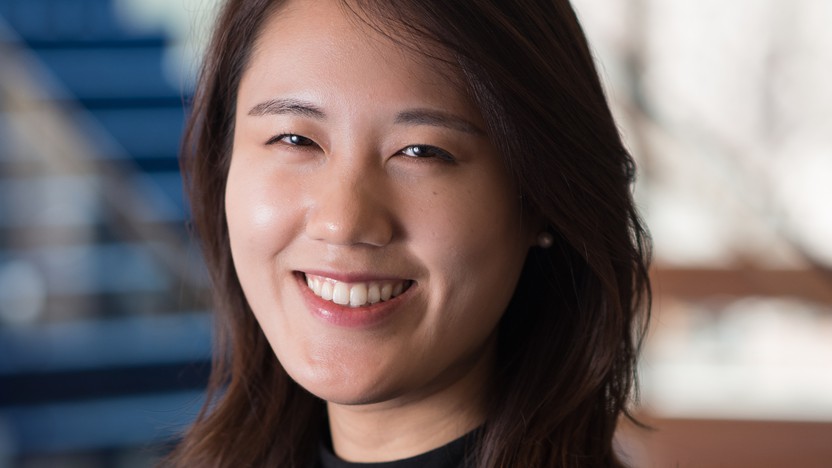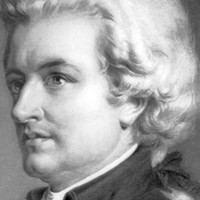Mozart's Jupiter Symphony


Owing to his limited output and a life and career shortened by illness, Austrian composer Hugo Wolf is inevitably overshadowed in the annals of music history by such names as Wagner (whom he admired), Mahler (his old chum from their days at the Vienna Conservatory), and others. But alongside those towering figures, Wolf warrants attention as one of late Romanticism’s quintessential voices. In seeking an art “written with blood,” Wolf developed a distinct personal style, characterized by a piercingly expressive tonal and harmonic language.
By the end of the nineteenth century, Wolf had achieved considerable renown. But at the age of 37, he suffered a dramatic mental deterioration, stemming from the tertiary syphilis that would eventually claim him. His delusional behavior played out publicly: a well-documented incident of the demented composer playing for friends inspired a similar scene in Thomas Mann’s Doktor Faustus. Wolf committed himself to an asylum in 1898 and died there five years later.
Beyond his catalog of songs, Wolf’s oeuvre is relatively modest. The small amount of orchestral music he produced is mostly lost or incomplete; his surviving chamber music comprises four string quartets. Of these, the Italienische Serenade has enjoyed the most lasting popularity.
Wolf sketched the delectable single-movement Serenade between May 2 and May 4, 1887. Contrary to the grave pathos and Sturm und Drang more immediately associated with the Romantic period, Wolf’s ebullient quartet illustrates another facet of Romanticism: the Italienische Serenade speaks to an ecstatic love of life, blind to any notion of despair. Known to be enamored with the vivid beauty of the Italian landscape, Wolf aimed to capture sonically the refreshing essence of (as he called it) “the South,” not only in this work but also in his Italienisches Liederbuch, a collection of forty-six songs. Fittingly, a spirited humor and animated joie de vivre charge the Italienische Serenade immediately from its opening measures. While the lower strings set the stage, the first violinist quietly taps the open strings of the instrument, as if tuning before the actual performance gets underway. The viola admonishes with a vulgar dissonance, and the Serenade begins.
The German composer Max Reger, one of Wolf’s most avid posthumous champions, prepared his colorful orchestration of the Italienische Serenade in 1903, the year of Wolf’s death.
Patrick Castillo ©2015

The initial inspiration for this piece came from Frank Lloyd Wright’s stained glass window designs, which he termed “light screens.” These designs use simple shapes like the square and the rhombus in repetitive patterns, and they often feature a lively dynamic of asymmetry between areas of intense geometric activity and expanses of largely empty space.
Light Screens was originally written for flute and string trio. It was later transcribed for string quartet and taken up by the Ives and Cassatt Quartets.
Andrew Norman ©2002
Few musical figures exercised greater influence on American concert life in the first half of the twentieth century than the Russian-born conductor Serge Koussevitzky. Koussevitzky is most highly celebrated for his tenure as music director of the Boston Symphony Orchestra from 1924 to 1949, in which position he ranked alongside Leopold Stokowski and Arturo Toscanini as the most prominent conductors in the United States. He distinguished himself especially through his support of contemporary music; Koussevitzky led premiere performances of works by Stravinsky (including the Symphonies of Wind Instruments and Symphony of Psalms), Prokofiev (Violin Concerto no. 1), Ravel (Piano Concerto), Barber, Copland, Gershwin, and many more. The establishment in 1940 of the Tanglewood Music Center, the Boston Symphony’s summer home and one of this country’s most important music educational institutions, is likewise an integral part of Koussevitzky’s legacy.
Before taking up the baton, Koussevitzky led a healthy career as a double bassist. He took up the instrument as a teenager and became proficient enough to be appointed Principal Bass of the Bolshoy Theater orchestra in 1901. His concertizing during these years often featured his own original compositions and arrangements.
Koussevitzky composed his Concerto for Double Bass in 1905, apparently with the help of the more accomplished composer Reinhold Glière. Koussevitzky premiered the concerto in Moscow and subsequently performed it in Germany, Paris, and Boston. It thereafter remained unperformed, as Koussevitzky turned exclusively to conducting and delayed publication of the score; the concerto would be restored to the repertoire only several years after the composer’s death.
Betraying little of the conductor Koussevitzky’s later penchant for contemporary fare, the concerto offers a paean to late Russian Romanticism. The work audibly demonstrates the influence of Tchaikovsky; in the dynamic between soloist and orchestra, traces of Dvorák’s Cello Concerto might also be heard. The Allegro first movement begins with a bold, declamatory call-and-response theme between orchestra and soloist. With the introduction of a second musical idea, the bass is given a lyrical voice: Koussevitzky’s use of its upper register and, later, virtuosic passagework are uncommon to the instrument, though certainly appropriate to the concerto medium.
The music proceeds attacca to the second movement Andante, which further explores the double bass’s capacity for cantabile lyricism, highlighted by the delicate pairing of the harp with the solo instrument’s tenor register. The Allegro finale revisits the first movement’s opening theme, propelling the Concerto to its dramatic conclusion.
Patrick Castillo ©2015
 Listen to Audio
Listen to Audio
When Wolfgang Amadeus Mozart began writing symphonies, he was an eight-year-old keyboard prodigy in London, where he had played for King George III and befriended Johann Christian Bach — the youngest son of Johann Sebastian Bach, and a trendsetter in the emerging genre of the symphony. Mozart’s earliest symphonies naturally followed the bright and clean style mastered by the “London” Bach. Later, as a teenager back in his hometown of Salzburg, Mozart looked to the example of Joseph Haydn, whose brother happened to work alongside Mozart and his father. Some of the symphonies Mozart wrote as a seventeen- and eighteen-year-old ranked among his first truly brilliant compositions, and by that time he had already completed three-fourths of his lifetime symphonic output.
Mozart had fewer occasions to write symphonies during his heyday as a busy freelancer in Vienna. He might never have written his three final symphonies were it not for the money troubles that plagued his final years, a period when demand for his performances had dried up. Some opportunity must have sparked this symphonic trilogy (a detail historians have not managed to unearth), but most likely nothing came of it. Mozart may not even have heard all three before he died.
Mozart’s final symphony, completed on August 10, 1788, has long been known as the Jupiter Symphony, a moniker probably added by Johann Peter Salomon, the same shrewd impresario who later brought Franz Joseph Haydn to London. The opening movement, set in an energized Allegro vivace tempo, establishes a ceremonial atmosphere with an abundance of quick, stepwise swoops. The Andante cantabile slow movement follows with serene and spacious music, in which ample rests and breaks leave melodies unaccompanied, downbeats unstressed, and textures uncluttered.
Like in the symphonies by his friend Haydn, the minuet functions as a light-hearted palate cleanser. The main “joke” here comes in the form of phrases that slip down through segments of the chromatic scale, touching on notes that momentarily clash with the home key.
The finale introduces a number of related themes and then juggles them with a variety of contrapuntal techniques. This balancing act reaches its climax in the coda, which contains a swirling fugue treatment of all five main themes at once. It proves how well Mozart absorbed the techniques of Johann Sebastian Bach, at a time when most composers dismissed such formal counterpoint as hopelessly old-fashioned, and it affirms Mozart’s godlike talent for marrying intellectual clarity with earth-shaking emotion.
Aaron Grad ©2022
Get driving directions and find nearby parking.
Find dining options close to the venue.
View seating charts to find out where you'll be seating.
Get driving directions and find nearby parking.
Find dining options close to the venue.
View seating charts to find out where you'll be seating.
